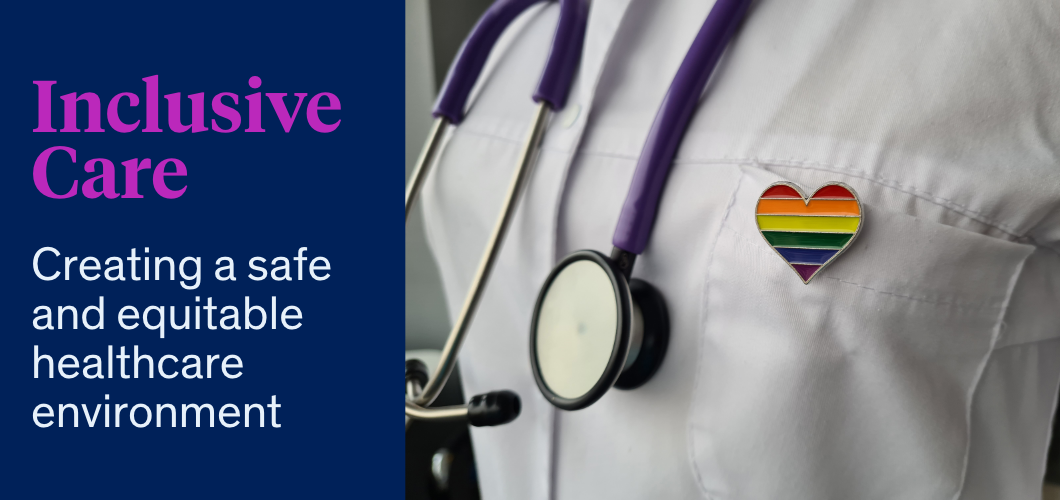Access to healthcare that is patient-centred and inclusive is a basic human right. Inclusive healthcare considers the needs of each patient individually including people living with HIV, those in at-risk communities, members of the 2SLGBTQI+ community, people with addictions or mental health disorders, Indigenous populations and others who may face unique healthcare challenges that are further compounded by who they are as a human being.
Canadian newcomers are another population who often face barriers to healthcare due to language, culture and religious beliefs that create additional challenges when accessing medical coverage or appropriate translation services become additional hurdles. Indigenous populations may seek care that integrates their traditional practices, such as smudging or healing circles; and connecting underserved individuals like those experiencing homelessness can be challenging due to complex health needs and a significant lack of resources within the healthcare system.
The obstacles to equitable healthcare for the 2SLGBTQI+ community often include heteronormative assumptions made by medical professionals — for instance, asking if a patient has a “girlfriend” or “boyfriend” instead of a “partner.” Such assumptions can discourage individuals from seeking care due to fears of discrimination. Even the materials in waiting rooms often use binary language, categorizing sexuality into two groups — heterosexual or homosexual, creating an unwelcoming or potentially stigmatizing environment for those who identify differently.

“As a transfemale, finding a healthcare provider who truly understands and respects my identity has been a challenge. There were times I felt invisible, dismissed, or judged in medical settings. But when I encountered a doctor who asked for my pronouns and respected my journey, I finally felt seen as a whole person, not just a patient.” — Anonymous
Deanna Clatworthy, RN, and WeRPN Board Member notes, “If [a patient doesn’t] don’t feel comfortable in the waiting room, they won’t stay.” This illustrates why inclusive language is crucial to creating a healthcare environment that ensures all individuals, regardless of their background, receive the quality of care they deserve.
Beyond learning the proper terminology, healthcare providers must communicate effectively with patients to ensure they feel safe and comfortable during appointments. It is acceptable to ask patients if they have a preferred pronouns for example. This gesture signals respect and can help break down barriers, leading to better communication and more successful patient interactions. It’s also important to focus on relevant health issues for the population you are serving. If a patient presents with a sore shoulder, their gender or country of origin may not be relevant and should not become the exam’s focal point.
Training for all healthcare staff, not just nurses, is vital to overcoming barriers to inclusive healthcare. Clatworthy emphasizes the importance of educating everyone, from paramedics and nurses to front-desk staff and doctors. Comprehensive training across all roles in healthcare ensures everyone is prepared to offer inclusive, quality care.
“Patients shouldn’t have to go to specialized clinics,” Clatworthy argues. “All healthcare professionals should be trained to provide inclusive, quality care to everyone.”

Although education is key to promoting inclusivity in healthcare, many current healthcare providers did not have the opportunity to learn these skills during their initial training, as inclusive healthcare education was not widely available in nursing and medical programs 10–20 years ago. Currently, more schools are incorporating comprehensive inclusivity training into their curricula to bridge gaps and better prepare future healthcare professionals.
Clatworthy, who is currently pursuing her Nurse Practitioner (NP) degree, is encouraged by the growing emphasis on inclusive healthcare in educational settings. “There’s quite a focus on it,” she says. “There’s even an entire textbook on inclusive healthcare now, which is exciting! It’s becoming a mandatory part of healthcare education programs.”
For those unable to return to school, many online courses, such as those offered by Rainbow Health Ontario, provide easy to access education about inclusive healthcare. WeRPN also offers resources promoting inclusive healthcare, such as our cultural competence learning modules.
Inclusive healthcare is not only impacted by gaps in educational training but also by the lack of opportunities for healthcare professionals to learn the specific skills needed to meet the evolving and diverse needs of all patients. While healthcare providers frequently update their technical skills, not all have the chance to gain expertise in areas like gender-affirming care, which is vital for the 2SLGBTQI+ community. Finding a family physician can be challenging enough, but for those in the 2SLGBTQI+ community, locating a primary care provider who offers services such as hormone access is often even more difficult.
“It’s reasonable to presume that when physicians with a roster of more than 2,000 patients engage in their yearly education, they’re going to focus on topics that frequently arise in their practice, such as diabetes,” Clatworthy explains. “As a result, they may not have the time to learn how to prescribe hormones for gender-affirming care.”

While progress has been made towards a more inclusive healthcare system, significant work remains to ensure that all patients, regardless of their background, receive the care they need and deserve. Emerging trends within platforms like telehealth, could offer opportunities to meet the needs of diverse populations, by reducing barriers for patients living in remote areas, those with mobility challenges as well as those with language barriers.
For healthcare to become truly equitable, healthcare providers, policymakers, and communities must collaborate to create a system that embraces inclusivity. This includes advocating for policies that promote health equity, investment in research on health disparities and fostering a culture of inclusion within healthcare institutions.
Inclusive healthcare is not just a moral imperative — it is essential for better health outcomes for all. By understanding and addressing the unique needs of diverse patient populations, healthcare providers can offer respectful, compassionate and effective care in safe, welcoming and judgment-free environments. Improving access to services will also help to alleviate the strain on hospitals and emergency departments by preventing patients from resorting to the ER when inclusive care is unavailable. As we move forward, it is crucial to continue to strive for a more inclusive and equitable healthcare system where every patient feels seen, heard and cared for.

